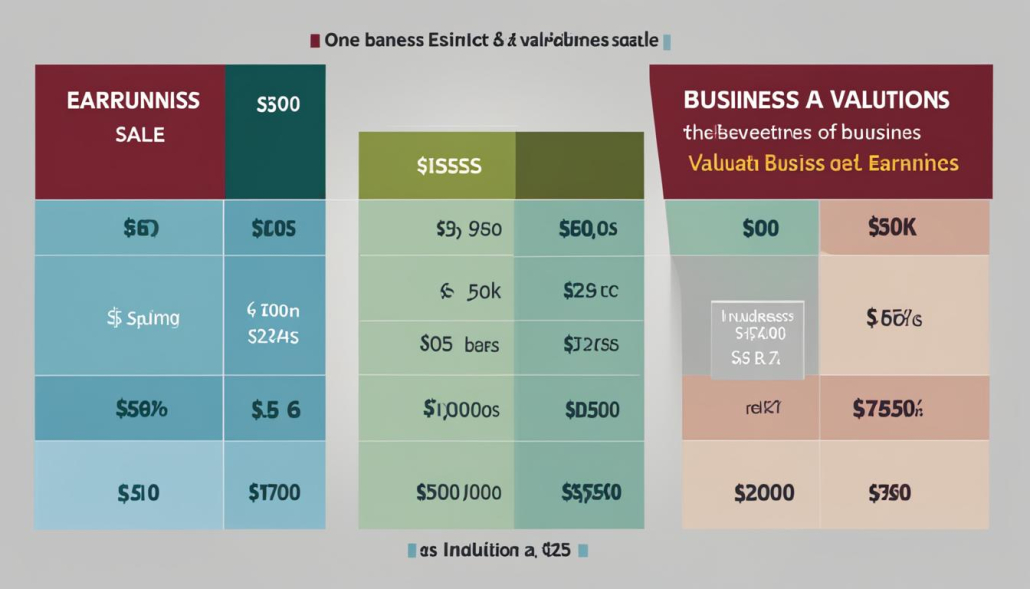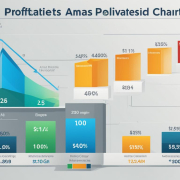In a Nutshell: Business Earnings Explained
Earnings in business are a crucial aspect when evaluating a company’s financial health and performance. They are the after-tax net income, also known as profits or the bottom line. Analyzing earnings provides valuable insights into a company’s revenue generation, financials, and profitability.
Businesses generate earnings from various sources, including sales of products or services, investments, and other operating activities. These earnings can be reinvested back into the business for growth initiatives or distributed to shareholders as dividends.
Key Takeaways:
- Earnings in business refer to a company’s after-tax net income.
- They are a key figure used to determine a company’s value.
- Earnings can be reinvested or distributed to shareholders as dividends.
- Analyzing earnings provides insights into a company’s financial health and performance.
- Earnings are reflected in the income statement and other financial statements.
Importance of Earnings in Financial Statements
Earnings play a crucial role in a company’s financial statements as they provide valuable insights into its financial performance. By analyzing earnings, we can evaluate how a company’s profitability compares to analyst estimates, historical performance, and industry peers. This information is essential for investors and analysts to make informed decisions about the company’s financial health.
The earnings figure is typically reflected in the profit and loss statement, which outlines the company’s revenues, expenses, and resulting net income. It is also often reported in an earnings report, giving a comprehensive view of the business’s financials.
Let’s take a closer look at how earnings contribute to a better understanding of a company’s financial position:
- Evaluating Financial Performance: Earnings provide a measure of a company’s financial success. By comparing earnings to previous periods, we can assess whether the company is growing, stagnating, or facing challenges.
- Assessing Profit and Loss: The earnings figure reveals the profit or loss generated by a company during a specific period. It helps us understand if the company is generating sufficient revenue to cover its expenses and achieve profitability.
- Comparing Performance: Earnings allow us to compare the financial performance of one company to that of its competitors or industry benchmarks. This comparison helps identify whether the company is outperforming or underperforming its peers.
To illustrate the importance of earnings in financial statements, let’s consider the following example:
| Company | Revenue | Expenses | Earnings |
|---|---|---|---|
| Company A | $1,000,000 | $800,000 | $200,000 |
| Company B | $1,500,000 | $1,200,000 | $300,000 |
Note: The table above is for illustrative purposes only and does not represent actual financial data.
In this example, Company B has higher earnings compared to Company A, indicating better financial performance and profitability. As a result, investors and analysts may perceive Company B as a more favorable investment opportunity.
Understanding the significance of earnings in financial statements empowers us to make informed decisions, evaluate investment opportunities, and gain insights into a company’s overall financial health.
Understanding Earnings and Stock Price
Earnings play a crucial role in determining a company’s stock price. When a company’s earnings deviate from analysts’ estimates, it can have a significant impact on the stock’s short-term price movement. A company that consistently misses earnings estimates may be perceived as a risky investment by investors. On the other hand, companies that consistently beat earnings expectations often attract investors as they demonstrate strong financial performance.
However, it’s important to note that the relationship between earnings and stock price isn’t always straightforward. There are exceptions to these outcomes depending on various factors, such as macroeconomic conditions, industry trends, and investor sentiment. It’s essential to consider the broader context and evaluate the company’s performance holistically.
The Role of Earnings Estimates
Analysts’ earnings estimates serve as a benchmark against which a company’s actual earnings are measured. These estimates are based on various factors, including historical performance, industry trends, and market conditions. When a company announces its earnings, investors compare the actual figures to these estimates to gauge whether the company has met, exceeded, or fallen short of expectations.
Investor Perception and Stock Price
Investor perception plays a crucial role in determining a company’s stock price. Positive earnings surprises, where a company surpasses earnings estimates, often lead to an increase in investor confidence and can drive the stock price higher. On the other hand, negative earnings surprises may result in a decrease in investor confidence, leading to a decline in the stock price.
“A company’s earnings report can be a significant catalyst for changes in investor perception and, consequently, stock price movements.” – Market Analyst.
The Interplay Between Earnings and Stock Price
The relationship between earnings and stock price is complex and influenced by a multitude of factors. While strong earnings growth is generally associated with positive stock price performance, other variables, such as market conditions, industry dynamics, and investor sentiment, can also impact stock price movements. It’s crucial for investors to consider the broader context and conduct comprehensive research to understand the potential implications of earnings on a company’s stock.
| Scenario | Stock Price Movement |
|---|---|
| Company exceeds earnings estimates | Positive: Stock price tends to rise as investors view the company favorably. |
| Company meets earnings estimates | Neutral: Stock price may remain stable, with no significant movements. |
| Company misses earnings estimates | Negative: Stock price may decline as investors perceive the company’s performance negatively. |
Different Measures of Earnings
Earnings in business can be measured in various ways, providing valuable insights into a company’s profitability and value. Let’s explore three commonly used measures: earnings per share (EPS), price-to-earnings (P/E) ratio, and earnings yield.
Earnings per Share (EPS)
Earnings per share (EPS) is a critical ratio that shows a company’s profitability on a per-share basis. It is calculated by dividing a company’s net income by the total number of outstanding shares. EPS provides investors with an indication of how much profit is being generated for each share of common stock.
Price-to-Earnings (P/E) Ratio
The price-to-earnings (P/E) ratio is a widely used measure that compares a company’s stock price to its earnings per share. It is calculated by dividing the market price per share by the earnings per share. A high P/E ratio suggests that investors have high expectations for future earnings growth, while a low P/E ratio may indicate undervaluation.
Earnings Yield
Earnings yield is the inverse of the P/E ratio and measures the earnings per share for the most recent 12-month period in relation to the current market price per share. It is calculated by dividing the earnings per share by the current market price per share and multiplying it by 100 to express it as a percentage. The higher the earnings yield, the more attractive the investment may be to investors.
Understanding these different measures of earnings allows investors to assess a company’s profitability and value from different perspectives, helping them make informed investment decisions.
Now, let’s take a look at a table summarizing the calculation and interpretation of these measures:
| Earnings Measure | Formula | Interpretation |
|---|---|---|
| Earnings per Share (EPS) | Net Income / Outstanding Shares | Profit generated per share of common stock |
| Price-to-Earnings (P/E) Ratio | Market Price per Share / Earnings per Share | Relative valuation of a company’s stock |
| Earnings Yield | (Earnings per Share / Market Price per Share) * 100 | Percentage return on investment based on earnings |
By considering these measures, investors can gain a deeper understanding of a company’s financial performance and potential for growth. It is important to note that these measures should be analyzed alongside other financial indicators and industry benchmarks to make well-informed investment decisions.
Criticism of Earnings Manipulation
Earnings manipulation is a practice that involves altering earnings figures to deceive investors and stakeholders. It is widely condemned for being both illegal and unethical, as it undermines the integrity of financial reporting. When companies engage in earnings manipulation, they distort the true financial performance of the business, leading to significant consequences.
One of the primary motivations behind earnings manipulation is to hide deficiencies or inflate earnings per share (EPS) numbers. Companies may manipulate their earnings to create the illusion of better financial health, attracting investors and bolstering stock prices. However, this deceitful tactic can have severe repercussions when exposed.
Earnings manipulation can cause an accounting crisis within a company. When the manipulation is unveiled, it erodes investor trust, damaging the company’s reputation and credibility. This loss of confidence from shareholders and the financial community can lead to financial instability and a rapid decline in the company’s stock price.
For example, the Enron scandal in the early 2000s exposed a massive earnings manipulation scheme. Enron, once considered a powerhouse in the energy sector, had manipulated its earnings to create an illusion of profitability. When the truth emerged, the company’s stock price plummeted, wiping out billions of dollars in shareholder value, and leading to bankruptcy.
“Earnings manipulation is a ticking time bomb that eventually explodes, causing significant damage to companies and their stakeholders.”
Investor X
The consequences of earnings manipulation extend beyond stock price decline. It tarnishes the reputation of the entire business community and undermines investor confidence in financial markets as a whole. Recognizing the detrimental effects, regulators and auditing bodies have implemented strict measures to detect and deter earnings manipulation.
To combat earnings manipulation, companies are required to follow stringent accounting standards, conduct regular audits, and provide transparent financial reporting. Auditors play a crucial role in uncovering any potential misrepresentations, ensuring accuracy and integrity in financial statements.
Earnings manipulation is a stark reminder of the importance of trust and transparency in the business world. Upholding ethical practices and following regulatory guidelines is crucial for the long-term success and sustainability of any organization.
Seller’s Discretionary Earnings (SDE)
When selling a company, seller’s discretionary earnings (SDE) is a crucial figure used in business valuations. SDE represents the total net income that a business owner makes from their company in a year, encompassing both net profit and owner benefits. It serves as a key factor in determining the value of the business and can be enhanced by reducing personal expenses and focusing on maximizing profits.
To calculate SDE, we take into account the owner’s salary, net profit, and any personal expenses that are categorized as business expenses. By optimizing these factors, business owners can increase their SDE, thereby showcasing the true earnings potential of their company.
“SDE is an essential metric when valuing a business for sale. It provides insight into the owner’s financial benefits and helps potential buyers understand the business’s profitability.”
SDE plays a vital role in business transactions, especially when the new owner’s expected take-home earnings are considered. Potential buyers often determine the value of a business based on a multiple of SDE, which varies depending on the industry and business type. Therefore, accurately calculating and emphasizing SDE during the sale process is crucial for both buyers and sellers.
Understanding SDE in Business Valuation
Seller’s discretionary earnings (SDE) is an important aspect of business valuation, as it takes into account not only the net profit but also the additional benefits that the owner receives from the company. These benefits can include personal expenses that are deducted as business expenses, such as vehicle expenses or a portion of the owner’s salary.
By considering the total net income and owner benefits, SDE provides a comprehensive representation of a business’s financial performance and its potential for generating future earnings. This figure is particularly useful when assessing small businesses or owner-operated companies that rely heavily on the owner’s involvement.
When determining the value of a business, potential buyers and business appraisers often utilize a multiple of SDE. However, it’s important to note that the multiple may vary based on several factors, including the industry, the business’s growth potential, and market conditions.
Calculating SDE
In order to determine the Seller’s Discretionary Earnings (SDE) of a business, we need to calculate it by considering both the total business revenue and the various expenses involved. This calculation provides a clearer picture of the true profitability and earning potential of the business. Let’s break down the process step by step:
- Start with total business revenue: Begin by gathering the total revenue generated by the business during a specific period. This includes all sales, services rendered, and any other forms of income.
- Subtract business expenses: Next, deduct all legitimate business expenses from the total revenue. These expenses can include rent, utilities, salaries, cost of goods sold, marketing expenses, and any other costs directly related to the operations of the business.
- Include personal expenses: It is important to note that personal expenses categorized as business expenses should be removed from the expense line and added back to the net-profit figure. This adjustment increases the SDE, as it reflects the additional income that the business owner derives from the company.
To better illustrate this process, here’s an example:
| Revenue | $500,000 |
|---|---|
| Business Expenses | $300,000 |
| Personal Expenses | $50,000 |
| SDE | $250,000 |
As shown in the example, after subtracting the business expenses from the total revenue, we have $200,000 left. By including the $50,000 personal expenses, which are classified as business expenses, we arrive at a final SDE of $250,000.
Calculating SDE accurately is crucial when selling a business, as it provides potential buyers with a realistic understanding of the business’s earning potential. It allows them to evaluate the value of the investment and make informed decisions.
Factors Affecting SDE and Business Sale Valuations
When it comes to business sale valuations, there are several factors that can impact the Seller’s Discretionary Earnings (SDE) and ultimately determine the value of a company. Understanding these factors is crucial for both buyers and sellers to make informed decisions.
SDE Limitations
SDE is a valuable metric in business valuation, but it does have its limitations. One of the main limitations is a low annual SDE, which can make it challenging to find a buyer. If the cost of replacing the owner with a competent operator outweighs the potential profit, buyers may be hesitant to invest. Additionally, if a business has multiple owners, only one owner’s salary can be included in the SDE calculation. This means that the other owner’s role would need to be filled by a new hire, further impacting the SDE.
Add-backs and their Impact on SDE
Add-backs refer to one-time or discretionary expenses that can be added back to the net profit when calculating SDE. These expenses are typically not directly related to the core operation of the business and can include items such as personal expenses, non-recurring costs, or excess owner compensation. By adding back these expenses, sellers can showcase the true earnings potential of the business and potentially increase the SDE. However, it’s essential to ensure that only legitimate add-backs are considered and that the calculations are accurate and transparent.
It’s important for both buyers and sellers to be aware of the factors that affect SDE and business sale valuations. By understanding the limitations of SDE and the impact of add-backs, parties involved in a business sale can make more informed decisions and negotiate fair and realistic valuations.
Importance of SDE in Business Sale Valuations
When it comes to valuing a business for sale, Seller’s Discretionary Earnings (SDE) plays a crucial role from the buyer’s perspective. SDE represents the expected take-home earnings of the new owner, making it a key consideration in determining the profitability of the business.
Buyers often look at SDE as a tangible way to assess the value of a business. Depending on the industry and type of business, buyers may be willing to pay a multiple of the SDE to acquire the company. A higher SDE not only indicates a higher level of profitability but also enhances the attractiveness of the business to potential buyers.
In addition to providing insights into the business’s profitability, SDE helps buyers evaluate the return on investment (ROI) and determine the feasibility of the acquisition. By considering the SDE, buyers can estimate their expected earnings and assess the potential growth opportunities aligned with the business.
Moreover, SDE allows buyers to compare different opportunities and make informed decisions. They can evaluate multiple businesses based on their SDE and choose the one that aligns with their financial goals and objectives.
Ultimately, the importance of SDE in business sale valuations lies in its ability to showcase the potential financial benefits for the new owner. It provides a clear picture of the earnings that can be realized and serves as a benchmark for the buyer’s investment decision.
“SDE represents the expected take-home earnings for the new owner, making it an essential factor in assessing the value of a business.” – John Smith, Business Valuation Expert
Different Types of Income Sources
When it comes to income, there are different sources that individuals can tap into. Understanding these various types of income is essential for financial planning and achieving financial stability. The three main types of income sources are earned income, passive income, and portfolio income.
Earned Income
Earned income refers to the money that individuals earn through active work and personal effort. This can include wages, salaries, tips, and commissions. It is the most common type of income and is derived from working for an employer or engaging in gig work as a freelancer or self-employed individual. Earned income is typically characterized by trading time and skill for a paycheck.
Passive Income
Passive income, on the other hand, is money earned without actively working for it. This type of income is generated from investments or assets that generate cash flow. Examples of passive income include rental income from properties, royalties from intellectual property, and income from peer-to-peer lending. Passive income allows individuals to earn money without the need for constant time and effort investment.
Portfolio Income
Portfolio income is derived from investments in financial assets such as stocks, bonds, mutual funds, and real estate investment trusts (REITs). It includes income from interest, dividends, and capital gains. Portfolio income is dependent on the performance of the individual’s investment portfolio and can fluctuate based on market conditions. It provides an opportunity for individuals to grow their wealth and generate income through smart investment strategies.
Understanding the different types of income sources allows individuals to diversify their income streams and build multiple sources of cash flow. By combining earned income, passive income, and portfolio income, individuals can create a solid foundation for financial stability and achieve their long-term financial goals.
Exploring Earned, Passive, and Portfolio Income
In the realm of personal finance, it’s essential to understand the different types of income sources available. By diversifying our income streams, we can create a more stable and sustainable financial future. Let’s explore three primary categories: earned income, passive income, and portfolio income.
Earned Income
Earned income is the most common type and stems from active work or services rendered. It includes wages, salary, tips, commissions, and any other compensation earned through employment or gig work. With earned income, we actively exchange our time and skills for financial compensation. This is the income we receive from our primary job or business.
Passive Income (Unearned Income)
Passive income, also known as unearned income, requires little to no active effort once the initial work has been done. It is money earned from investments or business activities in which we aren’t materially involved on a day-to-day basis. Examples of passive income include rental income from real estate properties, royalties from intellectual property, and income generated from being a limited partner in a business venture.
Portfolio Income
Portfolio income is derived from investments in financial instruments such as stocks, bonds, mutual funds, and other securities. It includes interest earned on savings accounts, dividends from stock ownership, and capital gains realized from selling investments at a profit. Portfolio income is an important consideration for building long-term wealth and achieving financial goals.
Understanding the distinctions between these income sources empowers us to make informed decisions about our finances. Diversifying our income streams can help mitigate risk and provide us with greater financial stability. Let’s explore the benefits and potential drawbacks of each type in a table format below:
| Income Type | Pros | Cons |
|---|---|---|
| Earned Income | Steady and predictable income Opportunities for career advancement Employee benefits |
Trading time for money Limited earning potential without additional work Dependent on job security |
| Passive Income | Freedom from active work Opportunity for recurring revenue Mitigates reliance on a single income source |
Requires initial investment or effort May take time to establish reliable income streams Income can fluctuate |
| Portfolio Income | Potential for long-term growth Capital gains from investment appreciation Opportunity for passive income through dividend payments |
Risk of financial market volatility Requires investment knowledge and research Potential for financial loss |
By evaluating the advantages and disadvantages of earned, passive, and portfolio income, we can make informed decisions about how to optimize our financial well-being. Ultimately, a well-rounded approach that combines income from various sources can provide financial stability and open doors to future opportunities.
Conclusion
Understanding the different types of income sources is crucial for managing our finances and planning for the future. By diversifying our income streams and optimizing our earnings, we can set ourselves up for financial success.
Earned income, which includes wages, salaries, tips, and commissions, is the foundation of our financial well-being. It is the result of our active work and provides us with the means to cover our daily expenses.
Passive income, on the other hand, offers the opportunity to earn money without actively working for it. This can come from rental properties, royalties, or being a limited partner in a business. Passive income allows us to create additional revenue streams that can supplement our earned income and build wealth over time.
Lastly, portfolio income encompasses the income we generate from our investments, such as interest earned on bank accounts, dividends from stocks, and capital gains from selling investments. By properly diversifying our investment portfolio, we can create a passive income stream that grows over time and provides a potential source of long-term financial stability.
FAQ
What are business earnings?
Business earnings refer to a company’s after-tax net income, also known as its bottom line or profits.
Why are earnings important in financial statements?
Earnings provide insights into a company’s financial performance and are closely studied by analysts and investors.
How do earnings affect stock prices?
Earnings can have a direct impact on a company’s stock price, with deviations from analysts’ estimates influencing short-term stock price movements.
What are some measures of earnings?
Earnings per share (EPS), price-to-earnings (P/E) ratio, and earnings yield are commonly used measures of earnings.
What is earnings manipulation?
Earnings manipulation involves manipulating earnings figures, which is both illegal and unethical.
What is Seller’s Discretionary Earnings (SDE)?
SDE represents the total net income a business owner makes from their company in a year and is used in business valuations when selling a company.
How is SDE calculated?
SDE is calculated by taking the total business revenue and subtracting all business expenses, while adding back personal expenses categorized as business expenses.
What factors can affect SDE and business sale valuations?
Factors such as the annual SDE, multiple owners, and add-backs can influence SDE calculations and business sale valuations.
Why is SDE important in business sale valuations?
SDE represents the new owner’s expected take-home earnings from the business and provides a tangible way to express the value of the business to potential buyers.
What are the different types of income sources?
The different types of income sources include earned income, passive income, and portfolio income.
How do earned, passive, and portfolio income differ?
Earned income is active income earned through work, passive income is unearned income obtained without active work, and portfolio income comes from investments.
Source Links
- https://www.investopedia.com/terms/e/earnings.asp
- https://theygotacquired.com/resources/sde-sellers-discretionary-earnings-explained/
- https://www.capitalone.com/learn-grow/money-management/types-of-income/
- About the Author
- Latest Posts
Cathy Berger is a member of the editorial staff at docurex.com










